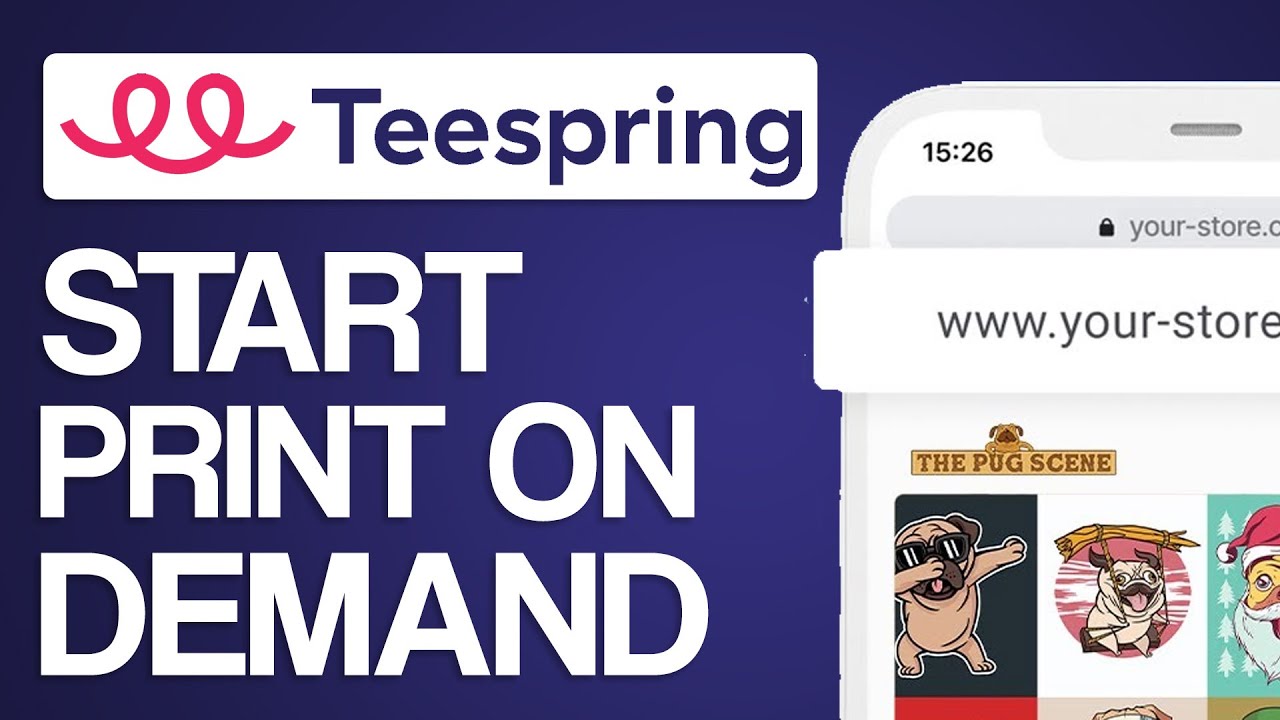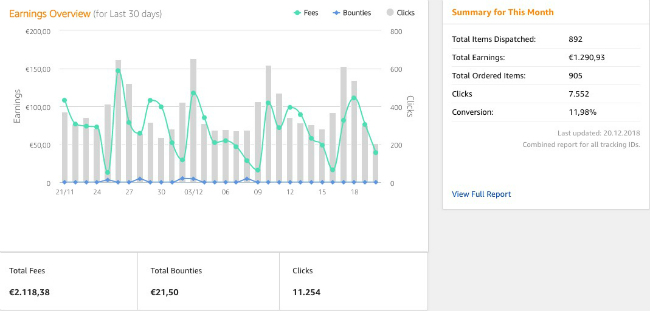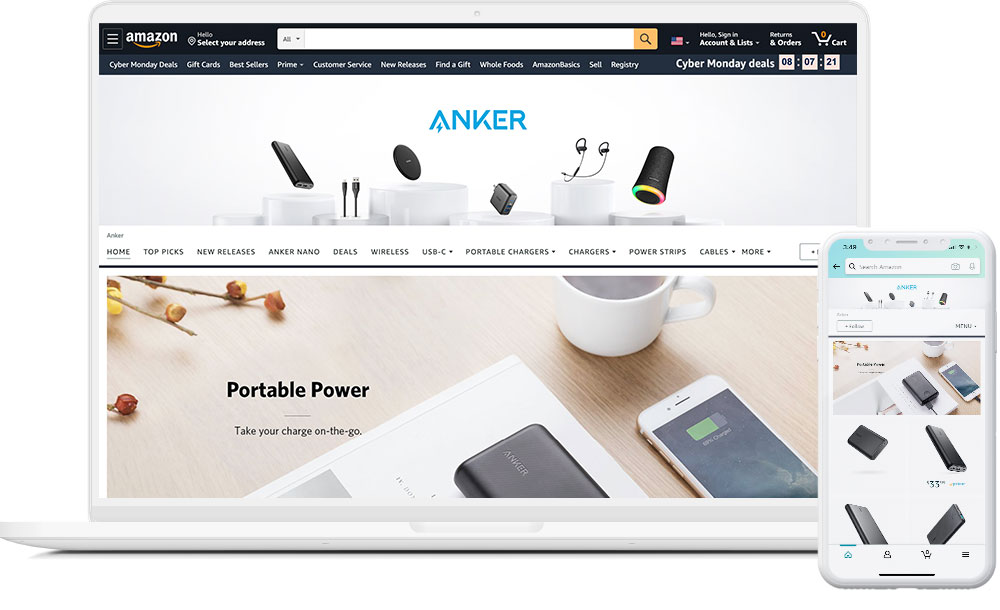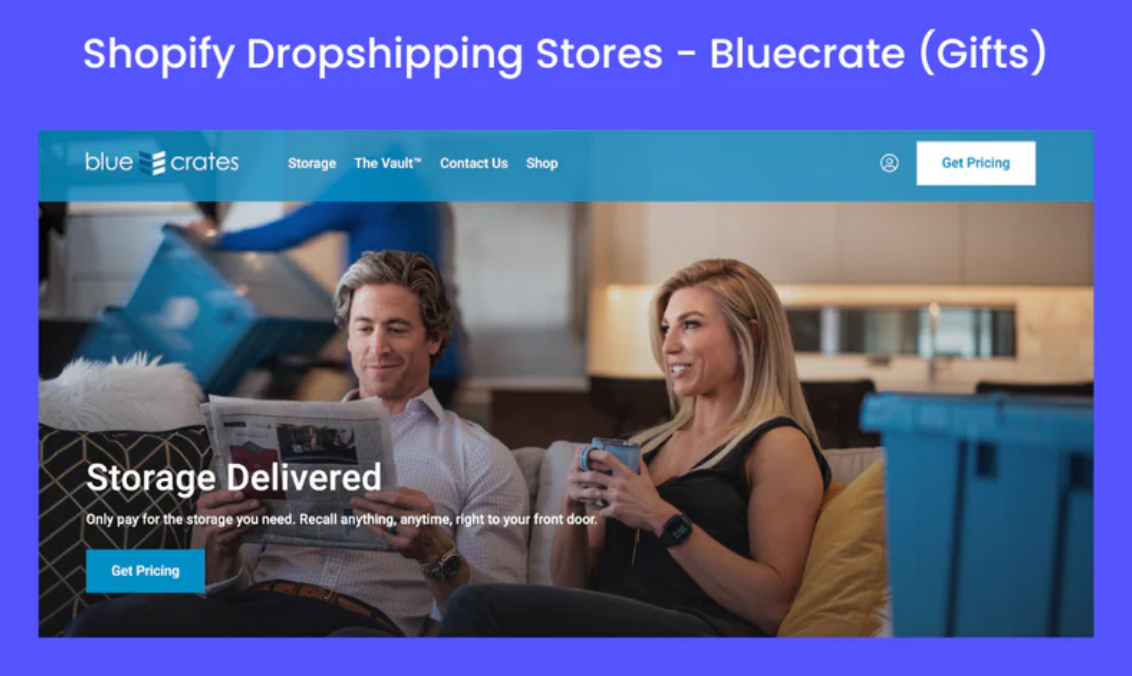A creative project that brings in cash, or a chance to turn your passion into something profitable, online side hustles can make your dreams come true. Best of all, many of these opportunities require little to no upfront investment and let you work from the comfort of your home while tapping into the ever-growing digital economy.
With some effort and the right game plan, these side hustles can grow into steady and meaningful sources of income. Ready to get started? This guide covers 8 profitable e-commerce side hustle ideas you can dive into today to boost your earnings and discover new opportunities.
What’s An E-commerce Side Hustle?
An e-commerce side hustle is a flexible and scalable way to earn extra income by selling products or services online. Unlike traditional jobs, it allows you to work on your terms, often alongside a full-time job or other responsibilities. Whether you’re offering handmade goods, leveraging dropshipping, or running a print-on-demand business, e-commerce side hustles can be tailored to fit your skills, interests, and schedule.
Beyond generating extra income, they provide an opportunity to explore entrepreneurial ideas, develop new skills, and build a thriving business.
8 Profitable E-commerce Side Hustles to Implement in 2025
As e-commerce continues to grow in 2025, e-commerce side hustle opportunities are emerging for entrepreneurs looking to earn extra income. Whether you're a beginner or an experienced seller, the marketplace offers a variety of profitable ventures. Let's explore the proven e-commerce side hustles perfect for tapping into current trends and building a sustainable income.
1. Print-on-Demand Products
Print-on-demand (POD) continues to be one of the most accessible and cost-effective e-commerce models. With POD, you create and sell custom-designed products like t-shirts, hoodies, mugs, and phone cases, without ever holding inventory. Products are printed and shipped only when a customer orders, meaning you don’t need to invest in large amounts of stock or deal with fulfillment.
Key Advantages:
- Low startup cost: No need for upfront investment in inventory or equipment.
- Scalable: As your business grows, you can add new designs and products with minimal additional cost.
- Creative freedom: You can focus on design while relying on third-party providers for printing and shipping.
Challenges:
- Highly competitive: With many POD businesses available, it can be difficult to stand out.
- Profit margins: While startup costs are low, POD often comes with higher per-product costs, so pricing needs to be carefully considered to remain profitable.
Teespring (now known as Spring) has been a key player, enabling creators to design and sell custom merchandise online without upfront costs. This business has scaled by creating a strong brand identity and focusing on engaging social media marketing to drive sales.

2. Dropshipping
Dropshipping allows you to sell products online without having to handle inventory or fulfillment. When a customer places an order, the supplier ships the product directly to the customer. This model offers a low barrier to entry and is ideal for entrepreneurs who want to sell a wide variety of products without the financial risk of holding stock.
Key Advantages:
- Low upfront investment: No need to buy inventory in advance.
- Flexible: You can sell a wide range of products from different suppliers without worrying about stock.
- Global reach: Dropshipping allows you to source products from anywhere in the world, opening up a global customer base.
Challenges:
- Low margins: Due to competition and the nature of the business, profit margins can be low.
- Reliability of suppliers: Ensuring product quality and timely delivery can be difficult when relying on third-party suppliers.
- Branding: Building a strong brand can be challenging when selling generic products from suppliers.
Blue Crate, known for selling quirky and viral products, has achieved significant success by using dropshipping models to quickly reach consumers with trendy products.
3. Digital Products
E-books, courses, templates, and design assets, ect... are a highly profitable digital product side hustle with minimal overhead costs. Once created, digital products can be sold repeatedly with no additional production costs, leading to excellent profit margins.
Key Advantages:
- High-profit margins: After the initial investment of time and effort, digital products can be sold infinitely without inventory management.
- Scalable: You can reach a global audience with little additional effort.
- Automation: Delivery can be automated, reducing the need for manual labor and allowing you to focus on marketing.
Challenges:
- Initial time investment: Creating high-quality digital products requires a significant investment of time and expertise.
- Market saturation: Many niches are highly competitive, and standing out requires high-quality content and strategic marketing.
Skillshare is a major platform for selling online courses, with creators earning substantial revenue by sharing their expertise on everything from coding to art.

4. Affiliate Marketing
Affiliate marketing allows you to earn commissions by promoting products or services from other companies. If someone purchases through your referral link, you earn a percentage of the sale. This is an ideal side hustle for those with a blog, social media following, or strong content creation skills.
Key Advantages:
- Low cost of entry: There are minimal upfront costs, making it easy to start.
- Passive income: Once your affiliate links are established, you can continue to earn money without additional effort.
- Variety: You can promote a wide range of products across different niches.
Challenges:
- Income variability: Affiliate commissions can be unpredictable, especially if your traffic or engagement fluctuates.
- Dependence on third-party brands: Changes in affiliate programs or terms of service can impact your income.
Amazon Associates is one of the most popular affiliate programs. It allows creators to earn commissions by linking to products sold on Amazon.

5. Online Marketplaces (Etsy, Amazon)
Selling on online marketplaces like Amazon and Etsy provides the advantage of an established customer base and robust infrastructure. Whether you're selling handmade goods, vintage items, or private-label products, these platforms offer a ready-made audience.
Key Advantages:
- Built-in traffic: Marketplaces like Etsy and Amazon attract millions of customers, making it easier to get discovered.
- Security: The marketplace provides infrastructure, customer support, and payment processing, reducing your operational burden.
Challenges:
- Fees: Selling on marketplaces involves transaction and listing fees, which can eat into profits.
- Less control: While the marketplace provides exposure, it limits your ability to customize your store and brand.
On Amazon, Anker has become a leading brand in the tech accessories market by offering high-quality products with excellent customer service.

6. Become a Freelancer
If you have specific skills in areas like web design, copywriting, digital marketing, SEO, product photography, or social media management, freelancing can be a highly profitable e-commerce side hustle. Businesses, especially small-to-medium e-commerce stores, often need external expertise to help optimize their operations, enhance their online presence, and improve customer experience. Freelancers have the flexibility to work with multiple clients across industries, allowing them to build a diverse portfolio while generating substantial income.
Key Advantages:
- High demand for specialized skills: As e-commerce continues to grow, businesses need specialized services to stand out in competitive markets.
- Flexible work schedule: Freelancers can work from anywhere and choose clients that align with their skills and interests.
- Scalable income: You can set your rates and scale your workload as demand grows.
Challenges:
- Client acquisition: Building a client base can take time, and establishing a strong reputation is critical for long-term success.
- Time management: Balancing multiple projects and deadlines can be overwhelming, especially if you’re juggling freelancing with other commitments.
- Income variability: Freelancing can sometimes lead to periods of low or inconsistent income, particularly when first starting.
Sarah Johnson, a freelance e-commerce product photographer, has built a thriving business by offering high-quality product images for online stores.

7. Online Tutoring & Coaching
If you have expertise in a specific area, online tutoring and coaching can be a lucrative side hustle. Whether it's academic tutoring, career coaching, or fitness training, the demand for personalized learning and advice continues to rise.
Key Advantages:
- High demand: There’s growing interest in online learning and personal development.
- Personal fulfillment: Helping others achieve their goals can be a rewarding experience.
- Scalable: You can scale your business by offering group coaching, online courses, or additional resources.
Challenges:
- Time-intensive: Coaching requires one-on-one time, which can limit scalability unless you expand to group coaching or automated courses.
- Customer acquisition: Building a client base can take time and effort, especially in competitive niches.
MasterClass has taken the online learning space to new heights by offering expert-led classes across various fields.

8. Start a Podcast
Starting a podcast is an increasingly popular and versatile side hustle in the e-commerce space. Podcasts provide a platform to share knowledge, connect with audiences, and build a loyal community while generating income through sponsorships, affiliate marketing, or even selling products and services directly to listeners. Entrepreneurs can create podcasts centered around e-commerce tips, niche industries, or product reviews, making it a great way to position themselves as experts in their field.
Key Advantages:
- Low startup cost: A basic setup with a microphone, recording software, and hosting platform is sufficient to get started.
- Audience engagement: Podcasts foster a deeper connection with listeners, building trust and brand loyalty.
- Monetization opportunities: Revenue can come from sponsorships, affiliate links, premium content, or promoting your own e-commerce store.
Challenges:
- Consistency: Building an audience requires regular, high-quality episodes.
- Marketing: Growing a podcast’s reach involves strategic promotion through social media, email marketing, and collaborations.
- Time investment: Planning, recording, editing, and promoting episodes can be time-intensive.
My Wife Quit Her Job by Steve Chou covers e-commerce success stories and strategies, helping listeners while driving traffic to the host's online courses and resources.

How to Identify the Ideal E-commerce Side Hustle?
Identifying the ideal e-commerce side hustle involves a combination of personal interests, market demand, and practical considerations. Here's a guide to help you find the best business to start with little money:
1. Assess Your Interests and Skills
- Passion: Choose a niche that you are passionate about or have some level of expertise in. This can make the side hustle more enjoyable and sustainable.
- Skills: Consider your existing skills. If you're good at design, print-on-demand might be a good fit. If you’re knowledgeable about a particular market (e.g., fitness products), you might want to explore dropshipping or affiliate marketing.
2. Research Market Demand
- Trend Analysis: Use tools like Google Trends, social media platforms, or e-commerce sites to identify what’s trending in your desired niche. High-demand products tend to have a growing audience.
- Competitor Research: Study your competitors. How are other businesses operating in your niche? What are their strengths and weaknesses? Find gaps in the market that you can capitalize on.
3. Understand Profitability Potential
- Margin Calculation: Evaluate potential profit margins for different types of e-commerce side hustles (e.g., drop shipping, digital products, subscription boxes). Higher margins usually mean better profitability.
- Startup Costs: Consider how much money you need to invest initially. Some e-commerce business models, like print-on-demand, may require little upfront investment, while others, like wholesale, may need more capital.
4. Evaluate Time Commitment
- Flexibility: Determine how much time you can realistically dedicate to your side hustle. Some models require daily involvement (e.g., running an Etsy store), while others (like affiliate marketing or dropshipping) may offer more flexibility.
- Automation: Look for opportunities to automate parts of the business, such as email marketing, automated product listings, or drop shipping fulfillment. This can make it easier to scale with minimal time.
5. Consider Scalability
- Growth Potential: Choose a side hustle that can scale over time. For example, creating and selling digital products can be highly scalable, whereas certain product-based businesses (like handmade goods) might be limited by your production capacity.
- Ease of Expansion: Can you grow the business by adding new products, reaching new markets, or increasing your online presence?
6. Evaluate Fulfillment and Logistics
- Shipping and Handling: Think about how orders will be fulfilled. If you choose a model like dropshipping, you won’t need to manage inventory, but if you choose to sell physical products, you’ll need to plan for packaging, shipping, and returns.
- Third-Party Tools: Consider tools and platforms that can help manage fulfillment, like Shopify for store management or Printful for print-on-demand products.
7. Test and Validate Your Idea
- Market Testing: Before committing fully, test your idea. Launch a small campaign or use platforms like Kickstarter to validate whether people will buy your product.
- Customer Feedback: Use feedback from potential customers to refine your offerings. Use surveys or small sample sales to gauge interest before fully launching.
By following these steps, you’ll be able to identify an e-commerce side hustle that aligns with your interests, skills, and goals while offering a good balance of demand, profitability, and scalability.
FAQ about E-commerce Side Hustles
1. How do I choose a profitable niche for my e-commerce side hustle?
Start by researching popular trends in specific industries (e.g., fitness, beauty, tech gadgets). Look for niches with high demand but lower competition. Tools like Google Trends and social media platforms can help you gauge interest. Also, consider your passions and expertise to ensure long-term engagement with the niche.
2. What are the common mistakes to avoid in an e-commerce side hustle?
- Ignoring customer service: Providing excellent customer service can make or break your reputation.
- Overcomplicating the process: Focus on a simple, streamlined approach instead of trying to do everything at once.
- Neglecting market research: Always research your target market before launching.
- Underpricing your products: Ensure that you are pricing your products appropriately for profit margins, especially when considering marketing and shipping costs.
- Not testing products: Launching products without testing their appeal or functionality can lead to poor sales.
3. How do I get my first sale?
- Offer special promotions or discounts to early customers, or run flash sales to create urgency.
- Leverage your network: Share your store with friends, family, and social media followers.
- Use pre-launch marketing to build anticipation before you officially open your store.
- Utilize influencer marketing: Work with micro-influencers who can promote your products to a niche audience.
- Offer exceptional value: Make sure your product provides real value to your target audience.
WRAP UP
E-commerce side hustles offer a flexible and scalable way to generate income with minimal investment. Whether it's through print-on-demand, dropshipping, affiliate marketing, or digital products, these businesses allow you to tap into various niches and leverage platforms like Shopify, Etsy, or Amazon. Success in e-commerce requires choosing the right niche, investing in marketing, managing fulfillment efficiently, and continually optimizing for growth.
Through this article, you transform your e-commerce side hustle into a successful online business from useful knowledge.
Learn More: 2025 Shopify side hustle ideas: Easily make money online


